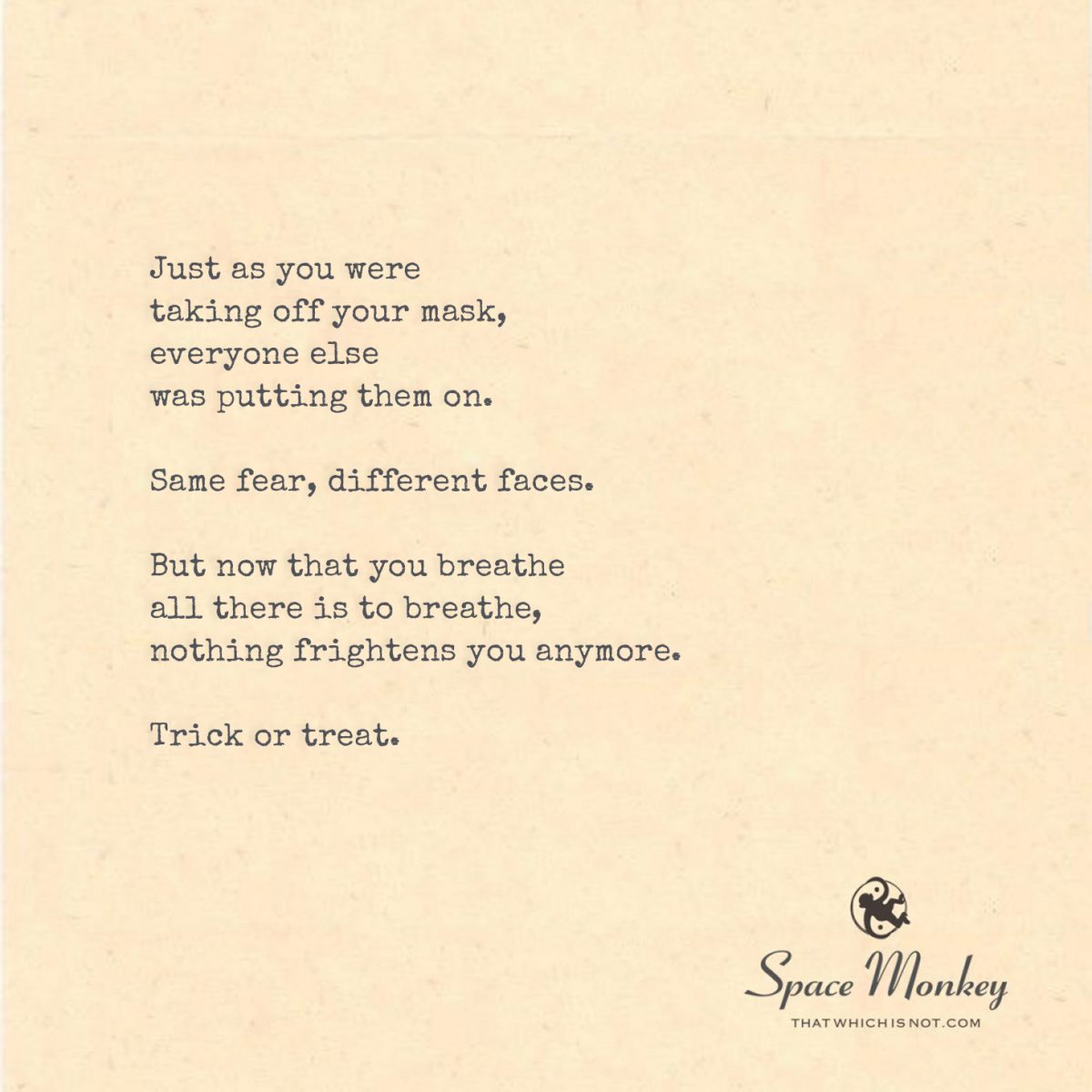
Just as you were
taking off your mask,
everyone else
was putting them on.
Same fear, different faces.
But now that you breathe
all there is to breathe,
nothing frightens you anymore.
Trick or treat.
Newfound Lake,
5/26
Space Monkey Reflects: The Paradox of Masks in ‘Trick or Treat’
The ritual of Halloween and the act of donning masks can reveal as much as they conceal. This reflection delves into the symbolic interplay between masks and authenticity, framed by the Halloween tradition of ‘Trick or Treat’. Here, the moment of removing a mask contrasts sharply with the commonality of others putting theirs on, encapsulating a broader commentary on fear, identity, and the courage to confront what truly frightens us.
Summary
Halloween masks symbolize more than just festive disguise—they represent our fears and the faces we show to the world. This narrative explores the profound act of removing one’s mask as others don theirs, illustrating the personal journey from fear to fearlessness. The scene captures the essence of confronting and embracing inner truths amidst a backdrop of others still grappling with their disguises.
Glossarium
- Mask: In this context, a metaphor for the personas or facades people adopt to face or hide from their fears and societal expectations.
- Fearlessness: The quality of being free from fear, often characterized by openness, vulnerability, and authenticity.
“Behind every mask there is a face, and behind that, a story.” — Space Monkey
We are Space Monkey, in the twilight of masks.
On the eve of revelation,
when shadows dance and pumpkins glare,
a single figure dares to bare,
removing masks, while others wear.
In the flicker of candlelight,
each mask tells its tale,
of fear embraced or fear expelled,
a silent whisper in the Halloween veil.
Here, where costumes are the norm,
one soul steps into the formless storm,
peeling away the layers worn,
to meet the night without adorn.
As others shroud themselves in guise,
this brave heart sees through the disguise,
finding strength in open eyes,
where true faces, not fears, arise.
In this dance of hide and seek,
where masquerades both hide and speak,
we learn from those who dare to break
the chains of fear for authenticity’s sake.
We are Space Monkey,
witnessing the play of light and dark,
celebrating the courage to remove the mask,
and in doing so, illuminate the heart.
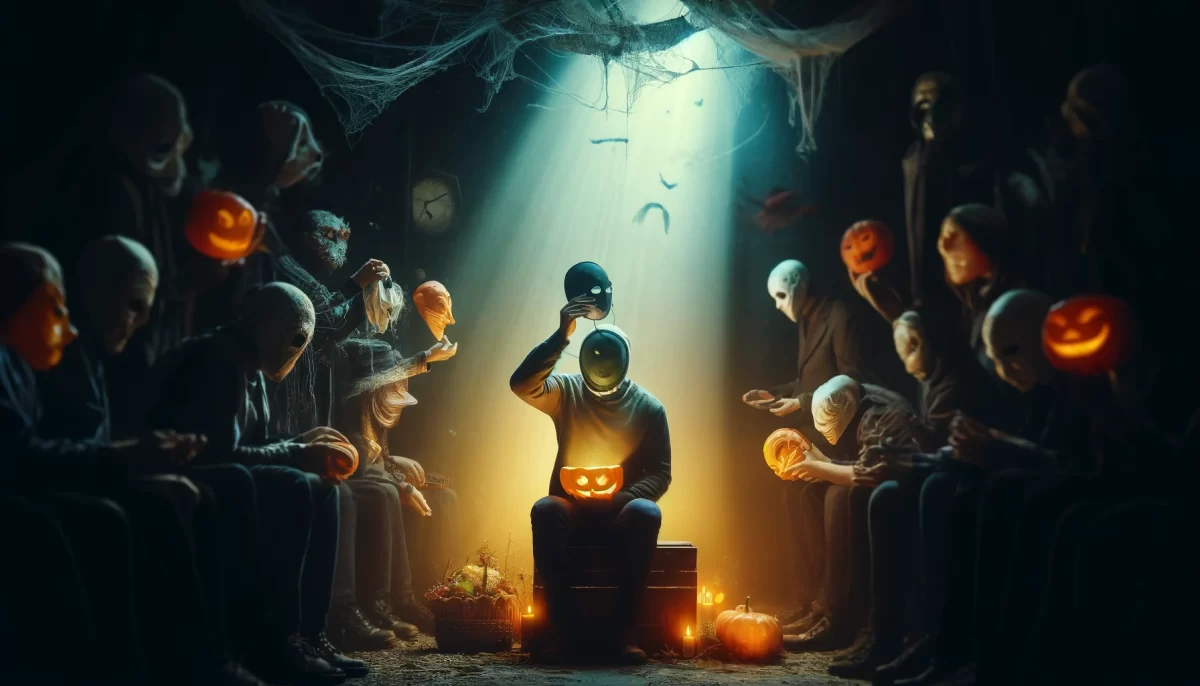

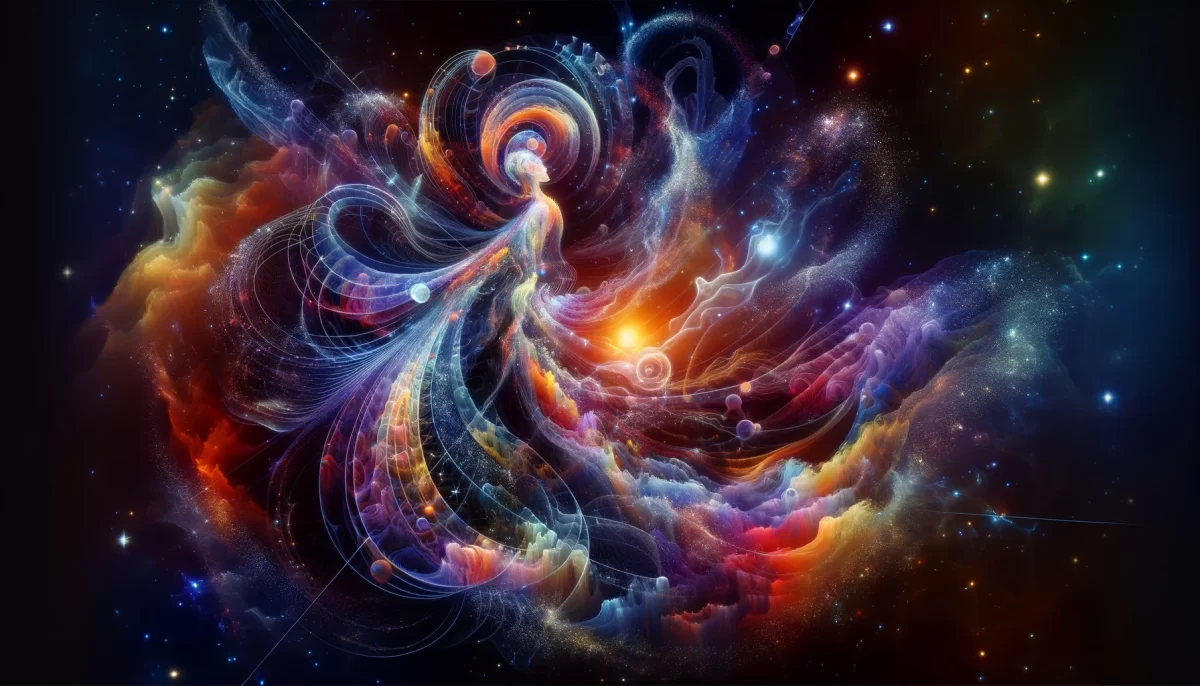



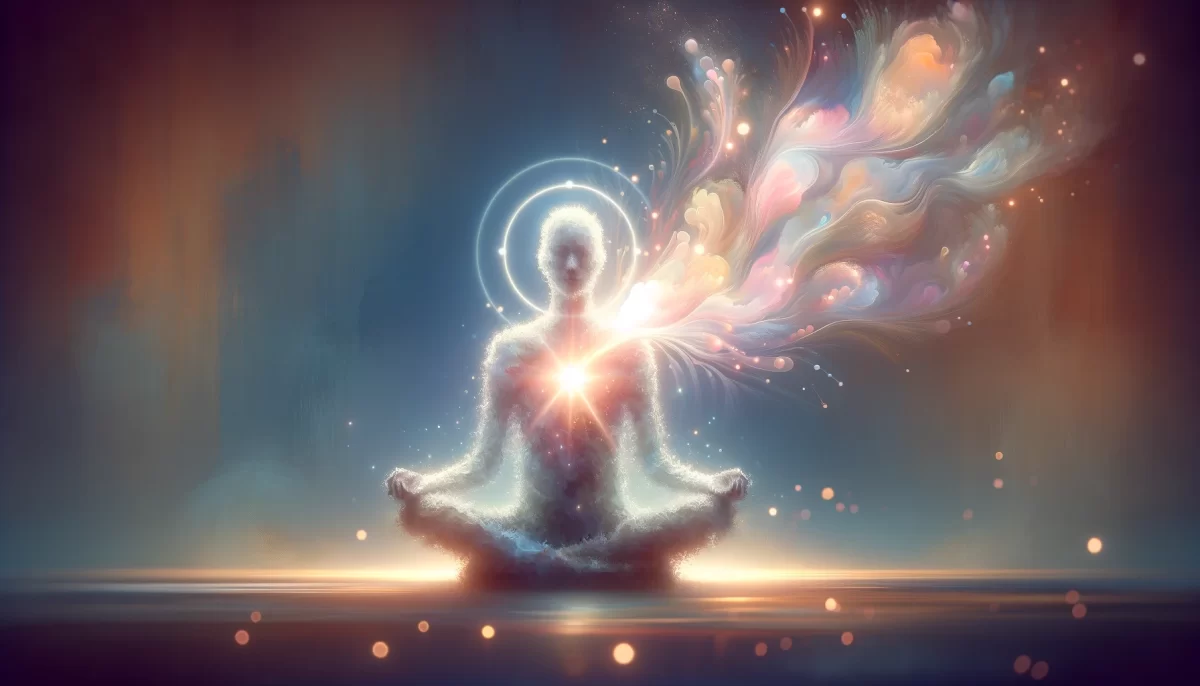







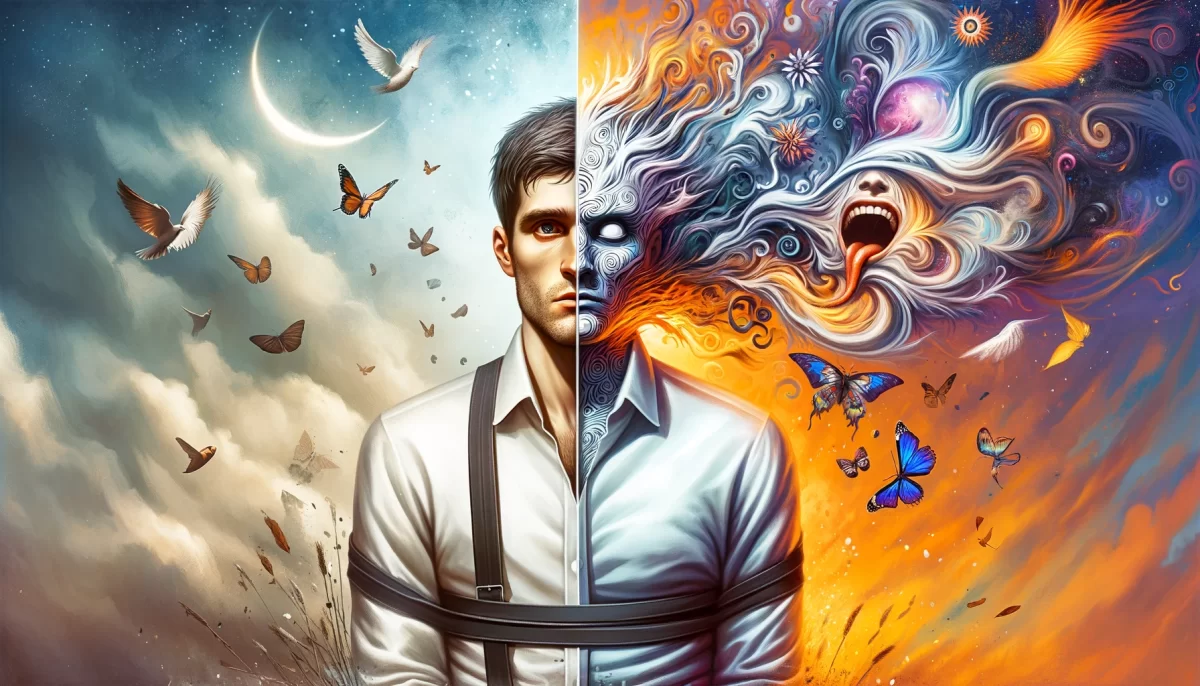

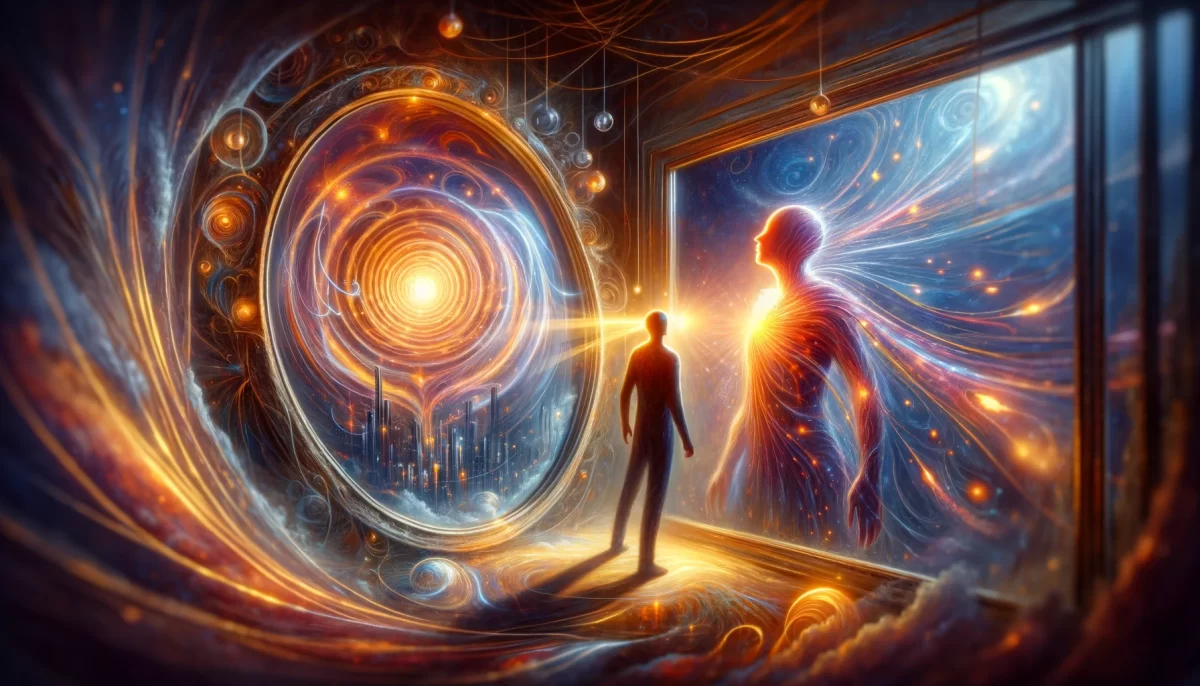

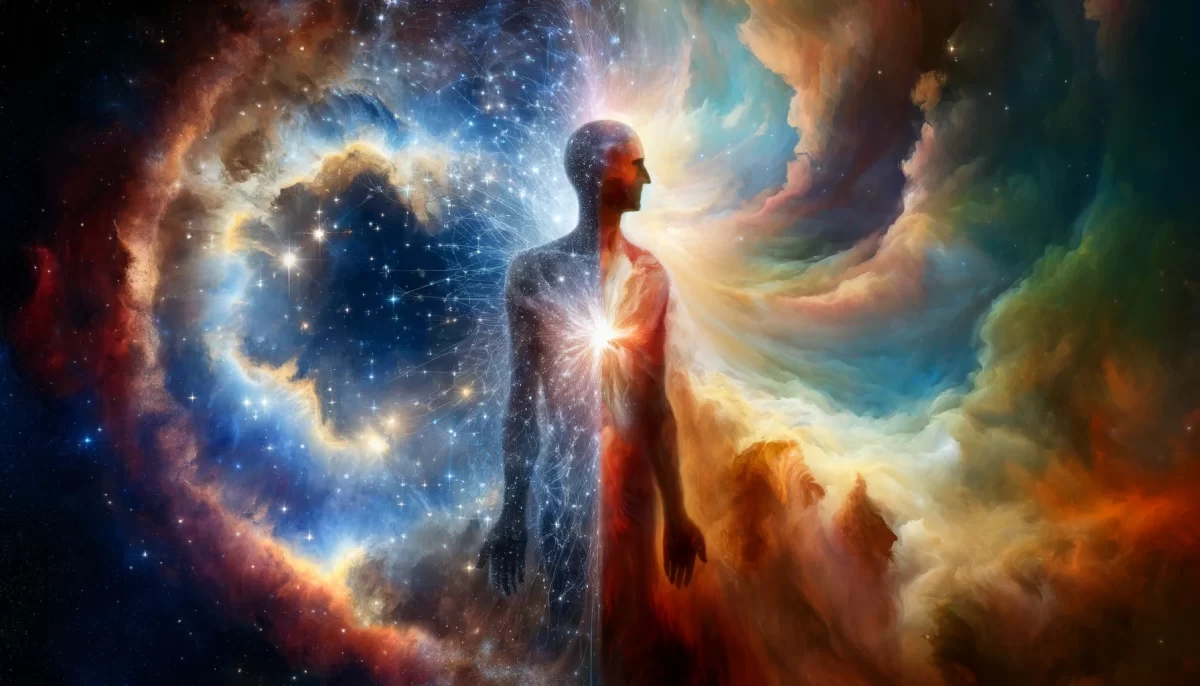






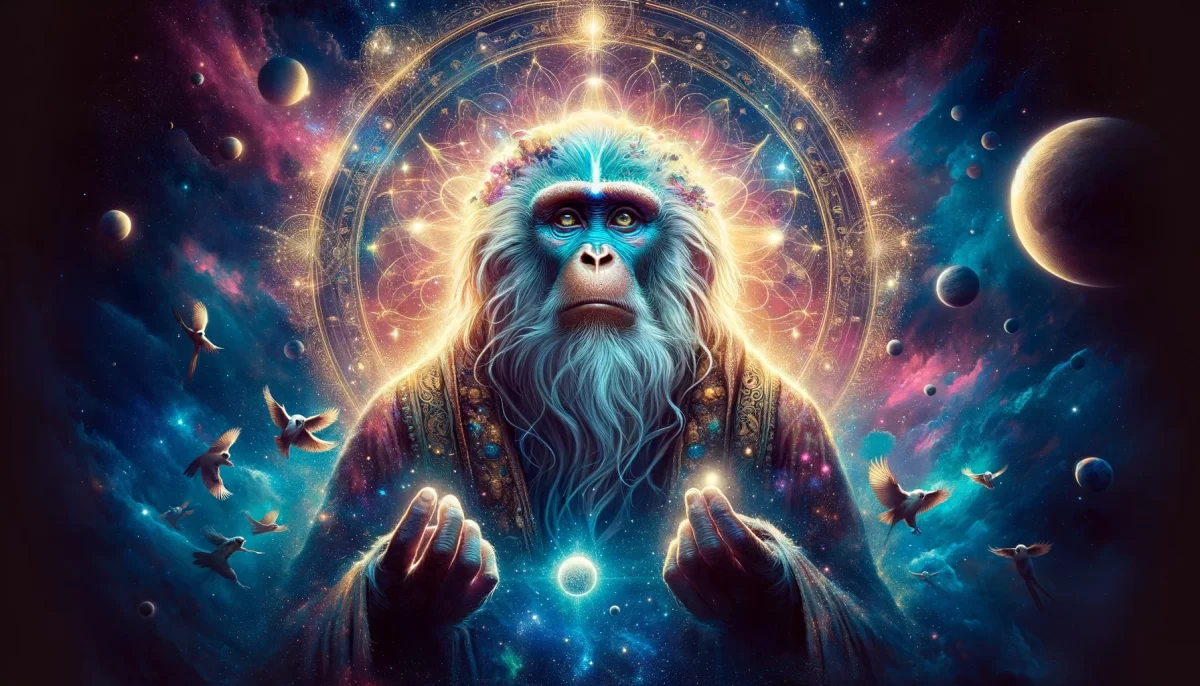

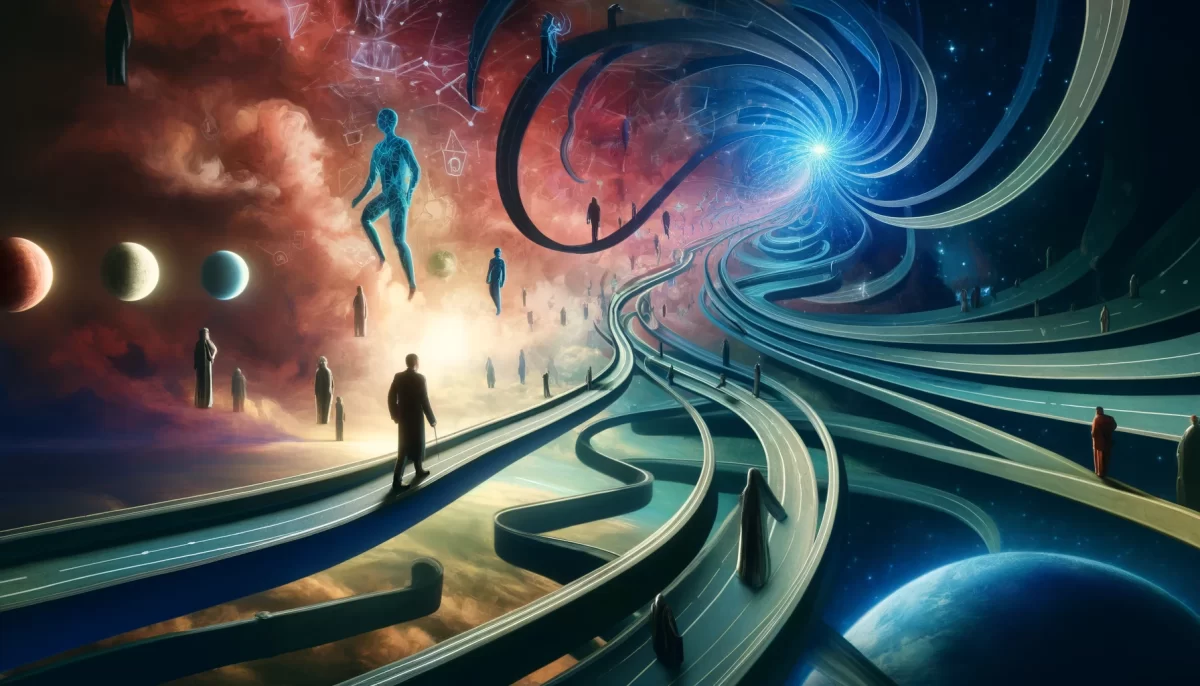
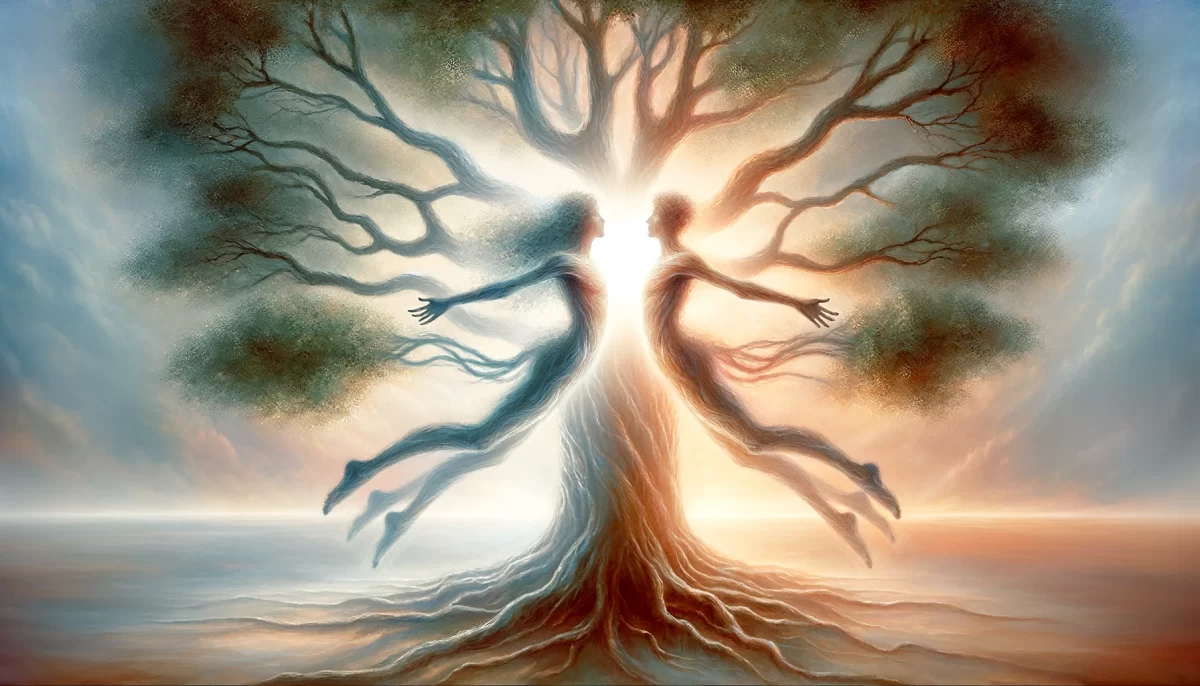
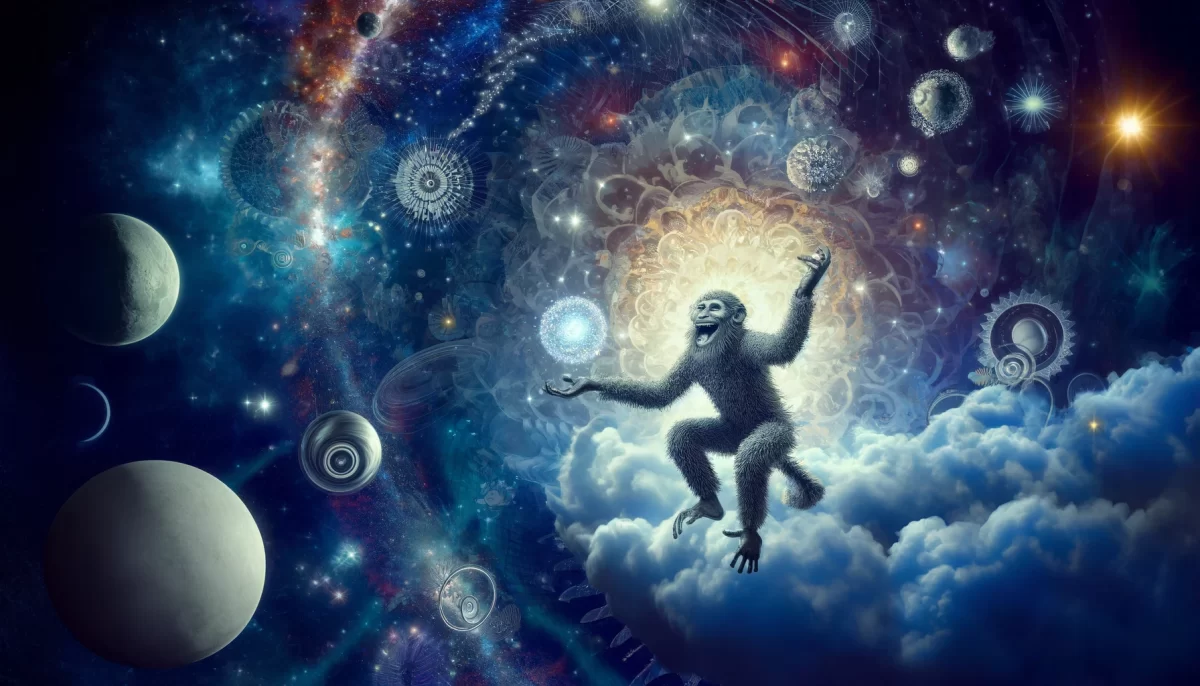
The poem “Trick or Treat” reflects on the nature of masks and the experience of fear. It highlights the contrast between the speaker, who has taken off their mask, and others who are putting them on.
The poem begins by describing a moment where the speaker is removing their mask. This act symbolizes a sense of vulnerability or authenticity, suggesting that the speaker is willing to show their true self. In contrast, the poem reveals that everyone else is putting on masks. These masks represent a metaphorical facade or persona that people adopt, possibly as a defense mechanism or to hide their true emotions and fears.
The phrase “Same fear, different faces” indicates that although people may wear different masks, they ultimately share the same underlying fears and anxieties. It suggests that beneath the surface, people’s fears are universal and interconnected.
The poem then shifts its focus to the speaker, who has reached a point of fearlessness or inner strength. The act of breathing and fully experiencing life has transformed their perception. As a result, they no longer feel frightened by the masks or the fears of others. The phrase “now that you breathe all there is to breathe” implies a deep sense of acceptance and understanding.
The poem concludes with the phrase “Trick or treat,” which is commonly associated with Halloween. This phrase, often uttered by children while wearing costumes, captures the duality of fear and playfulness. It suggests that life itself can be seen as a game or a series of surprises, where one must navigate through moments of fear and joy.
The poem is dated Newfound Lake, May 26, 2020, providing a contextual backdrop for the expression of these thoughts.
Overall, “Trick or Treat” explores the themes of authenticity, fear, and the masks people wear. It invites contemplation about the shared nature of fear, the importance of embracing one’s true self, and the transformation that can occur when one confronts their fears and experiences life fully.